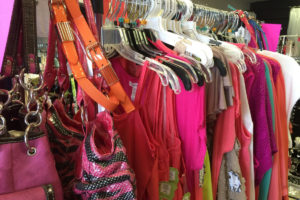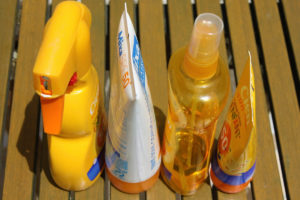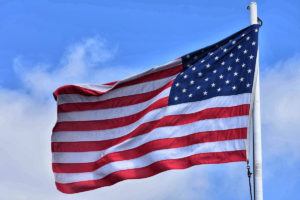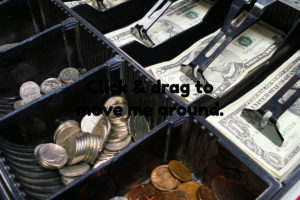 It is hard to believe but summer is almost here! What are you doing about it? As crazy as the question may sound there is a reason I ask. What are you doing that will be different than what you did last summer? Do you know what it was you did to inspire additional sales last year? Maybe you didn’t do anything at all differently. Maybe you added a new piece of summer merchandise to your merchandising strategy. How did that item do in sales? Was it a blockbuster for you? On a similar note, how was the customer foot traffic in your store? Did you see an increase in the number of patrons last summer over the rest of the year? If you aren’t asking the questions then you are probably flying by the seat of your pants and that is not going to be beneficial to you at all. Sales tracking and Customer Counting can assist you in exponentially growing your sales.
It is hard to believe but summer is almost here! What are you doing about it? As crazy as the question may sound there is a reason I ask. What are you doing that will be different than what you did last summer? Do you know what it was you did to inspire additional sales last year? Maybe you didn’t do anything at all differently. Maybe you added a new piece of summer merchandise to your merchandising strategy. How did that item do in sales? Was it a blockbuster for you? On a similar note, how was the customer foot traffic in your store? Did you see an increase in the number of patrons last summer over the rest of the year? If you aren’t asking the questions then you are probably flying by the seat of your pants and that is not going to be beneficial to you at all. Sales tracking and Customer Counting can assist you in exponentially growing your sales.
Adding products to your merchandise lines may be a good idea. Perhaps last summer you purchased 100 units of a new brand of suntan lotion to supplement your summer lineup. Did you keep track of how many of those units you sold at full price? Did you wind up taking markdowns on them in order to get them to move? You may have eventually been out of the merchandise but if you were not tracking how many you sold by the week you may have lost money if they all went at the end of the season at or below cost. By failing to follow sales of seasonal items you could develop a false picture of how a product moved and make the costly mistake of carrying it again the following year. One aside to this; be sure that seasonal merchandise is in a prominent location. Sticking this merchandise on a back endcap or in the main run is not going to produce the results you are seeking. This can also give you a poor picture of how the item could really have driven sales had it been in a more visible location.
Customer foot traffic is also an important tool for summer planning for the next year. If one of your intended purposes in adding a summer product line in your store is to drive up sales you need to know whether it has the intended effect. If you are keeping track of customer counts you can determine if a new product is drawing in more shoppers. A spike in customer counts can be compared to sales tracking of a new product(s). If there appears to be a correlation in the data you can make preparations for the next summer and plan for additional sales by bringing back those summer items. If a group of summer products proved profitable and drew in more customers then add to it with new summer goods. It would also be a good idea to review those sales figures and add more people on shifts. You may find that customer counts proved to be much higher than sales transactions were. If this is the case it is possible that your store could have lost sales by having insufficient cashiers or sales floor staff to provide assistance. Customer counting can also benefit your store with a breakdown of the time of day patrons were shopping. This provides flexibility in adding staff at peak times rather than adding people for an entire day if it isn’t necessary. Though it may take time to plan it out using the information you have collected from sales tracking and customer counting the payoff will be seen in sales increases.
A website, workzone.com, had an article, “45 Planning Quotes To Help You Reach Your Goals” by Steve Pogue. One of the quotes was from Warren Buffet, “Someone’s sitting in the shade today because someone planted a tree long ago.” Another quote attributed to Robert H. Schuller, “Spectacular achievement is always preceded by unspectacular preparation.” So friends, spectacular sales next summer will be dependent on how much preparation you are willing to put into planning today. Dedicate time now in reviewing your seasonal specialty item sales and how many customers entered your business and create a plan that will dazzle you with results next summer.
 Some people in retail look forward to it and some dread it. What am I talking about? Inventory! From the planning stages and meetings with the inventory counting team to the actual inventory day it can all be a lot to accomplish even for the best of planners. But what happens when you get through the actual counting phase? What comes next? You wait for the results. You may get preliminary results immediately but for larger stores booked inventory may take several weeks and they have teams to analyze the results. As a small retailer you may have to analyze the reports yourself but do you really understand what you are looking for? Are your results accurate? Stores have to keep track of what they have on hand and owners need to know where shortage has taken place and how it has happened.
Some people in retail look forward to it and some dread it. What am I talking about? Inventory! From the planning stages and meetings with the inventory counting team to the actual inventory day it can all be a lot to accomplish even for the best of planners. But what happens when you get through the actual counting phase? What comes next? You wait for the results. You may get preliminary results immediately but for larger stores booked inventory may take several weeks and they have teams to analyze the results. As a small retailer you may have to analyze the reports yourself but do you really understand what you are looking for? Are your results accurate? Stores have to keep track of what they have on hand and owners need to know where shortage has taken place and how it has happened. March is known for coming in like a lion and going out like a lamb. April showers bring May flowers but what in the world does May bring? May ushers in the summer sales season! Spring is wrapping up and now is the time to be getting your store ready for all of the shoppers looking for the items that will make the long, warm days of June, July and August a memorable time. The big stores are rolling out grills, picnic wares and yard games.
March is known for coming in like a lion and going out like a lamb. April showers bring May flowers but what in the world does May bring? May ushers in the summer sales season! Spring is wrapping up and now is the time to be getting your store ready for all of the shoppers looking for the items that will make the long, warm days of June, July and August a memorable time. The big stores are rolling out grills, picnic wares and yard games. Holiday sales events and promotions are intended to boost retail sales. The obvious big event is the Christmas holiday season which seems to begin in October for many retailers. The event carries into January when merchandise goes clearance as retailers prepare for the next holiday event and the beginning of the Spring sales lines.
Holiday sales events and promotions are intended to boost retail sales. The obvious big event is the Christmas holiday season which seems to begin in October for many retailers. The event carries into January when merchandise goes clearance as retailers prepare for the next holiday event and the beginning of the Spring sales lines. What do you do when a crisis occurs? Many people would say they take steps to address the crisis. Initially, that may sound like a good response unless you never planned on how you would react if that crisis were to take place. Think about it for a moment. If your business was on fire would you want firemen pulling up in their cars without the right gear or a plan of action of how they will take care of the fire? Sure it’s good to have the firemen there but if they don’t have the resources they need or a strategy on how to put out a house fire then the response is pointless. Police officers train on how to respond to a bank robbery in progress but the reality is many officers will never face that situation. According to a Cleveland Clinic Survey, 54% of Americans say they know CPR but the vast majority of us will never be called upon to use that training. So why do we do it? Why do we train for circumstances that are unlikely to ever confront us? We do it so we will be prepared for that one-in-a-million chance that we might have to apply that knowledge. President John F. Kennedy once said, “The time to repair the roof is when the sun is shining.” Attempting to play it by ear should an emergency happen is not a plan and may even make a problem worse.
What do you do when a crisis occurs? Many people would say they take steps to address the crisis. Initially, that may sound like a good response unless you never planned on how you would react if that crisis were to take place. Think about it for a moment. If your business was on fire would you want firemen pulling up in their cars without the right gear or a plan of action of how they will take care of the fire? Sure it’s good to have the firemen there but if they don’t have the resources they need or a strategy on how to put out a house fire then the response is pointless. Police officers train on how to respond to a bank robbery in progress but the reality is many officers will never face that situation. According to a Cleveland Clinic Survey, 54% of Americans say they know CPR but the vast majority of us will never be called upon to use that training. So why do we do it? Why do we train for circumstances that are unlikely to ever confront us? We do it so we will be prepared for that one-in-a-million chance that we might have to apply that knowledge. President John F. Kennedy once said, “The time to repair the roof is when the sun is shining.” Attempting to play it by ear should an emergency happen is not a plan and may even make a problem worse. The scary shoplifting cases we hear and see on TV, or on newspapers in the United States, are becoming too commonplace to rendered us shocked.
The scary shoplifting cases we hear and see on TV, or on newspapers in the United States, are becoming too commonplace to rendered us shocked.  Recently, I conducted an employee theft investigation for a client. I want to share some of the findings from that investigation in the hopes that you can use it to review your own potential for losses.
Recently, I conducted an employee theft investigation for a client. I want to share some of the findings from that investigation in the hopes that you can use it to review your own potential for losses. 
 Sometime this year you will most likely be conducting an inventory. Some stores even conduct multiple inventories when they have high stock shortage results. While it does not necessarily translate to poor results, a lack of adequate preparation can have an impact on the final shortage numbers.
Sometime this year you will most likely be conducting an inventory. Some stores even conduct multiple inventories when they have high stock shortage results. While it does not necessarily translate to poor results, a lack of adequate preparation can have an impact on the final shortage numbers. In a recent article published in LPM Insider, “Security Footage Sinks Employee Lawsuit Targeting Employee Bag Checks” by Garrett Seivold, Feb 7, 2018, they discussed a lawsuit brought against Nike by an employee who complained that he was being required to have package checks done when he was off the clock. His argument was that he was not being compensated for the time he is delayed. For the time being Nike has not been found to be excessive in its demands. They were able to demonstrate that employees were only being stopped for an average of 18 seconds for an inspection. This is hardly excessive by any measure. However, courts have a tendency to be inconsistent or a higher court may overturn a lower court decision. While one court may uphold the decision in favor of Nike there is no guarantee this will be true should a similar lawsuit be brought against other retailers.
In a recent article published in LPM Insider, “Security Footage Sinks Employee Lawsuit Targeting Employee Bag Checks” by Garrett Seivold, Feb 7, 2018, they discussed a lawsuit brought against Nike by an employee who complained that he was being required to have package checks done when he was off the clock. His argument was that he was not being compensated for the time he is delayed. For the time being Nike has not been found to be excessive in its demands. They were able to demonstrate that employees were only being stopped for an average of 18 seconds for an inspection. This is hardly excessive by any measure. However, courts have a tendency to be inconsistent or a higher court may overturn a lower court decision. While one court may uphold the decision in favor of Nike there is no guarantee this will be true should a similar lawsuit be brought against other retailers. 